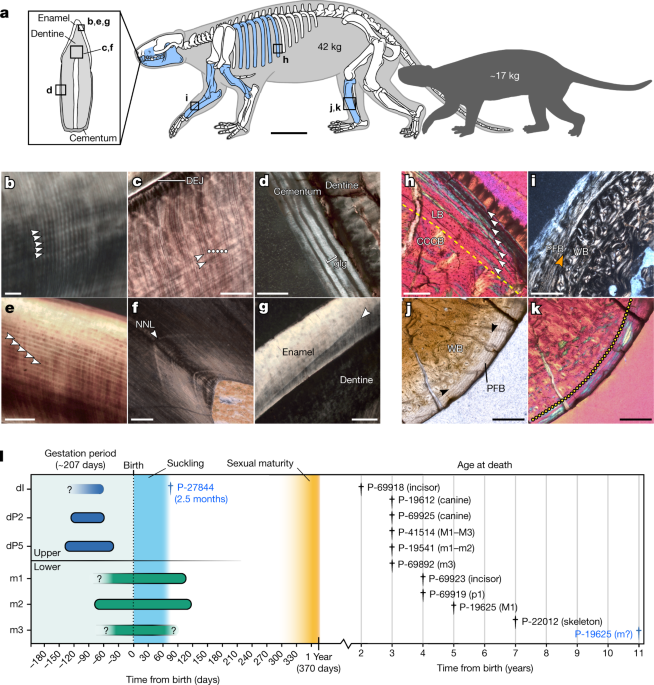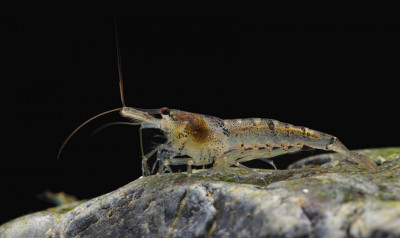先史時代の哺乳類の中には、すぐに生まれ、現在の哺乳類の2倍の速さで成長し、恐竜絶滅後に優位に立ったものがいることが、研究で示唆されている。 Some prehistoric mammals were born ready-to-go and grew up twice as fast as today’s mammals, giving them an edge after the dinosaur extinction, a study suggests.
2022-08-31 エディンバラ大学
バスモドンの歯の薄切片を調べたところ、この哺乳類が毎日刻んでいた成長線(バンドと呼ばれる)が浮かび上がってきました。また、レーザーで歯を蒸発させ、その化学組成を明らかにした。
歯の化学的変化は、出生時に亜鉛が多く沈着し、哺乳期にバリウムが濃縮されるなど、幼少期の大きな変遷を示しましこれは、このような結果が得られた最古の化石であり、研究者によれば、これまでの記録保持者よりも約6000万年古いという。た。
推定される妊娠期間は現在の同サイズの哺乳類と同じだが、この初期の哺乳類は、比較するとより急速に生死を繰り返していたことがわかった。このデータから、P. バスモドンは1歳の誕生日を迎える前に独立し、交尾の準備を整え、平均して3〜4年しか生きられなかったことがわかる。一方、現在の同サイズの哺乳類の多くは20年以上生きる。
研究は、絶滅した哺乳類の日常生活について、これまでで最も詳細な窓を開くものです。この前代未聞の詳細さは、進化の歴史の早い時期に進化した胎盤哺乳類を特別な存在にしている生活様式の一端を示すものです。
胎盤性哺乳類の生活史の起源 The origin of placental mammal life histories
<関連情報>


Gregory F. Funston,Paige E. dePolo,Jakub T. Sliwinski,Matthew Dumont,Sarah L. Shelley,Laetitia E. Pichevin,Nicola J. Cayzer,John R. Wible,Thomas E. Williamson,James W. B. Rae & Stephen L. Brusatte
Nature Published:31 August 2022
DOI:https://doi.org/10.1038/s41586-022-05150-w

Abstract
After the end-Cretaceous extinction, placental mammals quickly diversified1, occupied key ecological niches2,3 and increased in size4,5, but this last was not true of other therians6. The uniquely extended gestation of placental young7 may have factored into their success and size increase8, but reproduction style in early placentals remains unknown. Here we present the earliest record of a placental life history using palaeohistology and geochemistry, in a 62 million-year-old pantodont, the clade including the first mammals to achieve truly large body sizes. We extend the application of dental trace element mapping9,10 by 60 million years, identifying chemical markers of birth and weaning, and calibrate these to a daily record of growth in the dentition. A long gestation (approximately 7 months), rapid dental development and short suckling interval (approximately 30–75 days) show that Pantolambda bathmodon was highly precocial, unlike non-placental mammals and known Mesozoic precursors. These results demonstrate that P. bathmodon reproduced like a placental and lived at a fast pace for its body size. Assuming that P. bathmodon reflects close placental relatives, our findings suggest that the ability to produce well-developed, precocial young was established early in placental evolution, and that larger neonate sizes were a possible mechanism for rapid size increase in early placentals.

